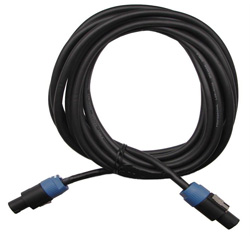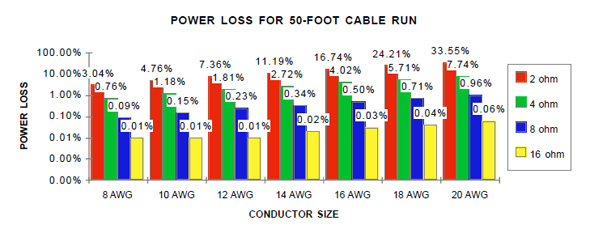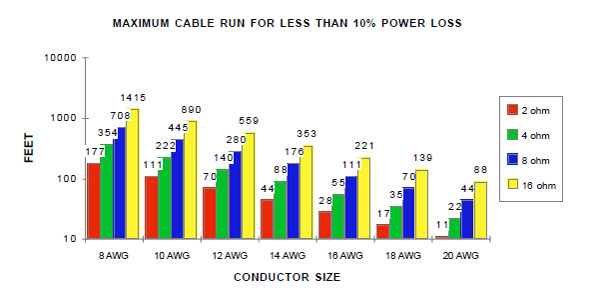
But power amp outputs are rated in watts. How are amperes related to watts?
Ohm’s Law says that current (amperes) times voltage (volts) equals power (watts), so if the voltage is unchanged, the power is directly proportional to the current, which is determined by the impedance of the load. (This is why most power amplifiers will deliver approximately double their 8-ohm rated output when the load impedance is reduced to 4 ohms.)
In short, a 4-ohm load should require conductors with twice the copper of an 8-ohm load, assuming the length of the run to the loudspeaker is the same, while a 2-ohm load requires four times the copper of an 8-ohm load.
Explaining this point leads to the following oft-asked question:
How long can a loudspeaker cable be before it affects performance?
The ugly truth: Any length of loudspeaker cable degrades performance and efficiency. Like the effects of shunt capacitance in instrument cables and series inductance in microphone cables, the signal degradation caused by loudspeaker cabling is always present to some degree, and is worsened by increasing the length of the cable.
The most obvious ill effect of loudspeaker cables is the amount of amplifier power wasted.
Why do cables waste power?
Copper is a very good conductor of electricity, but it isn’t perfect. It has a certain amount of resistance, determined primarily on its cross-sectional area (but also by its purity and temperature). This wiring resistance is “seen” by the amplifier output as part of the load; if a cable with a resistance of 1 ohm is connected to an 8-ohm loudspeaker, the load seen by the amplifier is 9 ohms. Since increasing the load impedance decreases current flow, decreasing power delivery, we have lost some of the amplifier’s power capability merely by adding the series resistance of the cable to the load.
Furthermore, since the cable is seen as part of the load, part of the power which is delivered to the load is dissipated in the cable itself as heat. (This is the way electrical space heaters work!) Since Ohm’s Law allows us to calculate the current flow created by a given voltage across a given load impedance, it can also give us the voltage drop across the load, or part of the load, for a given current. This can be conveniently expressed as a percentage of the total power.
How can the power loss be minimized?
There are three ways to decrease the power lost in loudspeaker cabling. First, minimize the resistance of the cabling. Use larger conductors, avoid unnecessary connectors, and make sure that mechanical connections are clean and tight and solder joints are smooth and bright.


